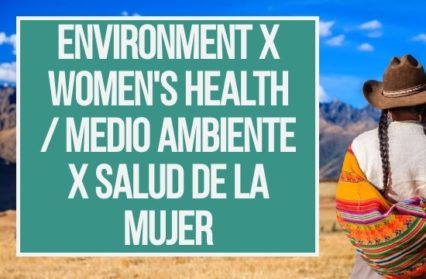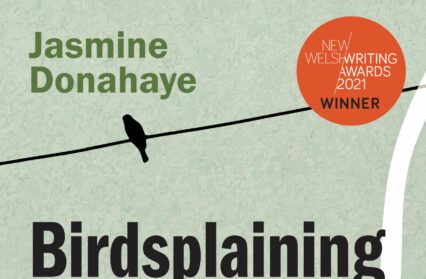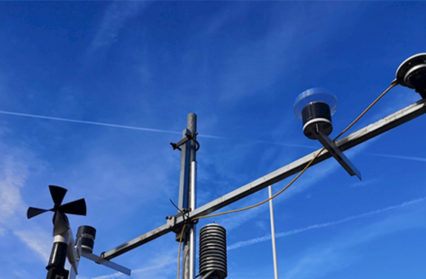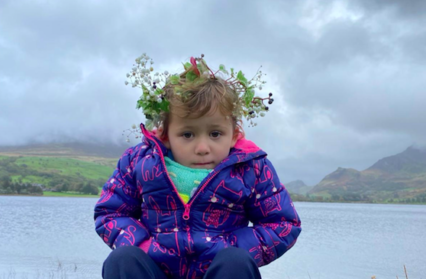Natalia Zuniga Arbildo discusses her work at the Environment x Women’s Health Project, a Peru-based initiative seeking to analyse women’s environmental health issues and the environment gender-heath nexus.
Have you ever asked if women and men are affected to the same extent by climate change and environmental threats? According to the Intergovernmental Panel on Climate Change, “people who are socially, economically, culturally, politically, institutionally, or otherwise marginalized are especially vulnerable to climate change and also to some adaptation and mitigation responses.” Within this group of vulnerable people, differences among social class, gender and ethnicity have been identified. Therefore, it has been widely proven that women and adolescents in the Global South are disproportionately affected by climate change and other environmental threats. However, portraying women and girls just as victims within the climate emergency may not be an appropriate approach, as it can enhance a negative gender stereotype. On the contrary, it is important to recognize that women are fundamental for successful mitigation and adaptation strategies. The Environment x Women’s Health Project (ExWH project), co-directed by Dr. Laura J. Brown and Dr. Elaine C. Flores, seeks to analyse the environment gender-health nexus, with a particular focus on Peru.
Earlier this year, we organised a series of online ExWH workshops aimed to facilitate knowledge exchange and create a network of academics and practitioners interested in women’s environmental health issues. The team are also currently conducting interviews with Peru-based researchers, NGO leaders and public authorities about their experiences of potential and implemented projects regarding gender, environmental, and health matters in the country. With COVID-19 having severe impacts in Peru and the recent political turmoil, these interviews are being carried out online.
We all know that no one will be immune from the impacts of climate change, however it is also important to point out that low-resource people living in developing countries will be disproportionately negatively impacted, given the lack of access to sanitation, clean water, and proper healthcare systems, as well as their exclusion from adequate measures and warnings to mitigate the consequences. Due to colonialism, patriarchal systems, and other macro structural problems affecting developing countries, women have been marginalised and placed in a condition of vulnerability from different perspectives. According to the United Nations, in 2018, for every 100 men aged 25 to 29 years living in poor conditions in Latin American and the Caribbean, 113 women were living in the same way. All of these well-known inequalities are enhanced due to climate change, particularly in the Global South, which has been severely affected by floods, droughts, heat waves, water scarcity, and many other environmental threats.
To illustrate, given the scarcity of water, women and girls are forced to carry out additional tasks, such as walking long distances to collect water for cooking and cleaning, which generate additional physical strain, and increase the risk of gender-based violence. Another identified problem is related to human movement in response to environmental change, given that women and girls are exposed to violence in the movement process. For instance, Amnesty International has shown that moving from Mexico to the United States proves a dangerous process for many women and girls, with around 6 out of 10 being raped during the journey.
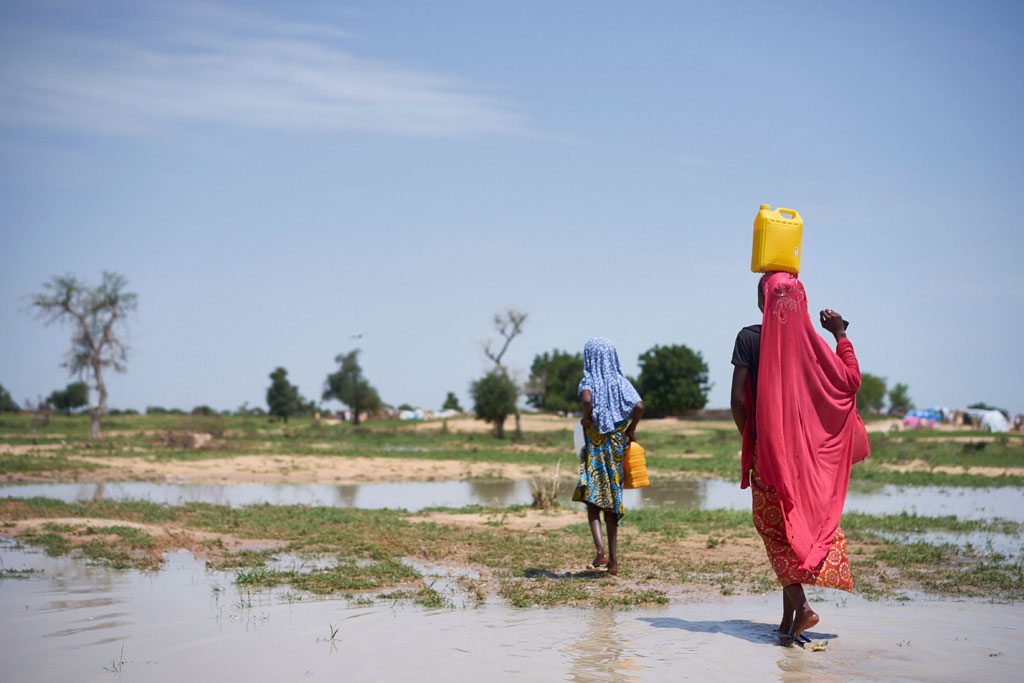
Furthermore, health issues have been identified due to rising temperatures, such as in the case of the transmission of malaria in some locations. Pregnant women are particularly vulnerable to this disease, being twice as ‘appealing’ as non-pregnant women to mosquitoes. A final example is related to natural disasters, which, in most cases, are not politically neutral, given that many of the negative impacts caused by them could be prevented if inequalities and social vulnerabilities were addressed in the due time by the corresponding government. Natural disasters kill more women than men and kill women at a younger age than men. For example, cyclone disasters in Bangladesh killed 140,000 people in 1991, 90% of whom were women. This catastrophic gender inequality could be due to women being more heavily tied to their homes, so even if a warning is issued, they die while waiting for their relatives to come back home. Women play key care roles in most societies across the globe. The importance of women’s care roles, and their responsibility for the health of their family is further increased during natural disasters. This inevitably means that there is reduced time for studying, working, and taking care of themselves.
The Environment x Women’s Health Project project brings the aforementioned issues around women’s environmental health to the table. During the virtual workshops in September, I was intrigued by the presentations given by incredible panellists, who shared interesting studies from across the globe, with projects in Peru, Malawi, India, Scotland, Haiti, the Dominican Republic, and many others. Dr. Katharine Dow, a Senior Research Associate at ReproSoc kicked off the workshop series by analysing the concept of “reproductive justice”. Katie reflected on how the climate justice, queer justice, and environmental justice movements are interconnected and can provide some insight into understanding reproductive justice. Particularly, I want to highlight one of the examples she addressed in her presentation about a collaborative project that analysed ‘BirthStrike’, ‘Conceivable Future’ and ‘No Future No Children’ movements, all led by women pledging not to have children until their corresponding governments take proper actions to fight against climate change. These movements create a space for discussion and awareness about the future of new children due to the climate crisis.
For the second workshop, we listened to two Peruvian presenters, explaining the specific situation in the country. Valeria Urbina, a member of the Peruvian organization ‘Derecho, Ambiente y Recursos Naturales (DAR)’, explained one of the biggest problems of the Latin America region related to extractive activities, and how these activities negatively impact indigenous people, especially women. She focused on physical violence and health issues that indigenous women have to face because of extractive activities and environmental contamination, such as the inability to conceive, the increase in abortion or premature births, or newborns with heavy metals in their blood.
As a Peruvian environmentalist, these issues are not new for me nor anyone involved in the subject but the lack of attention given to this problem is a pressing issue that must be prioritised in the policy agenda. A gender perspective needs to be included in regulations and policies need to consider measures to address these health and social impacts. It is also important that women participate in policy-making decisions, and that a safe space is provided to indigenous women where they can speak out freely.
To finish the workshop series, Dr. Laura J. Brown and Dr Elaine C. Flores shared some findings from their interviews with women’s organisations in Peru. These organisations have a largely female workforce, suggesting that they are providing valuable opportunities for women to get involved in environmental health advocacy, aiming to prioritise the gender perspective therein. The interviews revealed a lack of effective implementation of approved policies (i.e., the National Plan of Gender and Climate Change approved in Peru), and identified a blaming game with NGOs blaming the government and companies, without necessarily reflecting on their own parts to play. Further interviews with officers from the Peruvian public sector and women’s environmental health researchers are currently underway to understand how these environmental and health issues are being addressed and how the gender perspective is being incorporated into the policy and academic agenda.
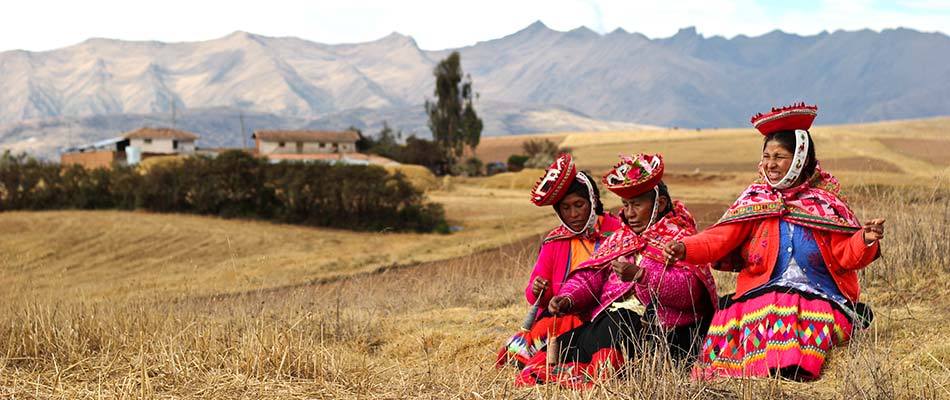
In conclusion, given the heightened vulnerable situation of women and girls, which is enhanced due to the climate crisis, there is a need to include their perspectives and needs within policies, in order to design mitigation and adaptation measures from which they can be benefited. As cited by CARE International UK, “women are under-represented at all levels of climate negotiations – from national to global. The average representation of women in national and global climate negotiating bodies in 2015 was below 30%.” This is too low and needs to change, it is critically important to include women in negotiations and policymaking.
There are Peruvian organisations, such as Flora Tristan, CARE Peru and ONAMIAP, that are involved with this objective, trying to make politicians and the public aware of what is happening to indigenous women and how their role is fundamental to address environmental issues. Finally, and reflecting on the aforementioned blaming game, I do think that as professionals, academics or citizens, we also have an important role to play within the climate crisis, from investigating and being aware of the real situation and injustices around it, to taking direct actions in our own countries. Of course, educating ourselves about these issues is the first step, and the ExWH project provides a valuable means to do so.
For more information please visit the Environment x Women’s Health Project website.
Climate Related Articles:
For more articles discussing the human impact upon our natural world, check out the Wales Arts Review Environment Section and follow us on Twitter.



